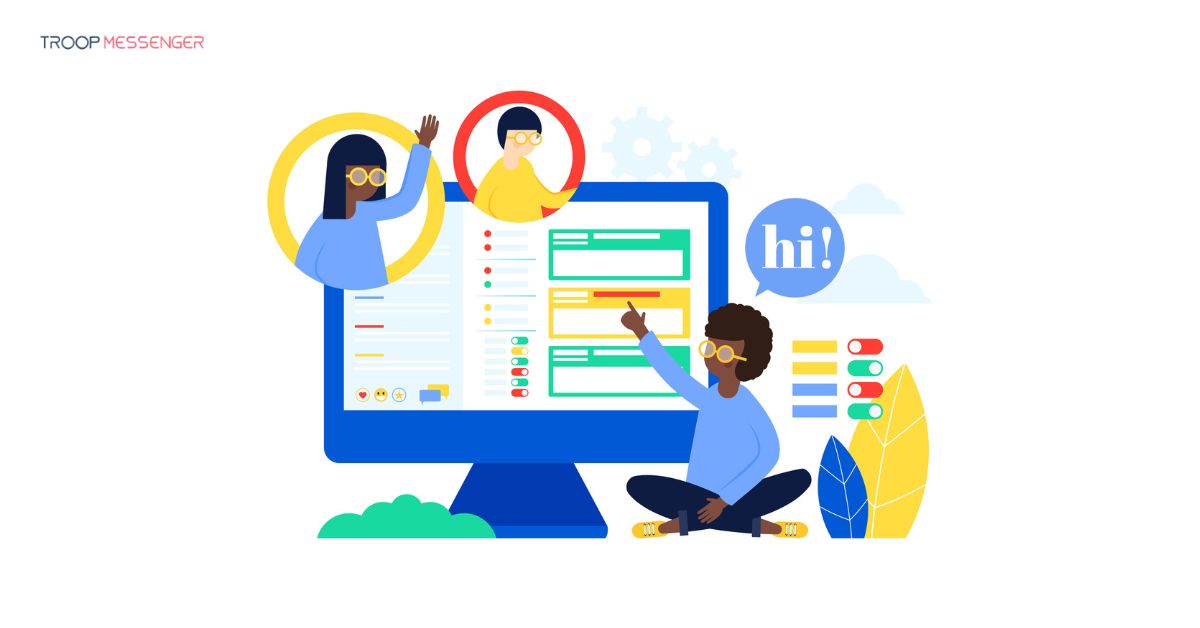Connect with us

Managing Security and Accessibility in Internal Communication: Best Practices and Key Strategies
Effective internal communication is the backbone of any successful organization, but oftentimes, effectiveness means a lack of safety measures. Hence, ensuring both security and accessibility in your communication channels is crucial for protecting sensitive information while keeping everyone informed and engaged.
Prioritizing security means implementing consistent measures such as end-to-end encryption and centralized storage with granular access controls. On the other hand, making communication accessible involves integrating tools and practices that cater to all employees, including those with disabilities.
Integrating these practices into your internal communication strategy will lay the foundation for a more resilient and cohesive organization.
Establishing Robust Security Protocols
Incorporating effective security protocols into your internal communications is crucial for safeguarding sensitive information. This involves preventing data breaches, promoting secure messaging, and having an action plan for incidents. But what exactly does it take to ensure everything is air-tight? Well, the process involves:
Preventing Data Breaches and Cyber Attacks
A comprehensive approach to preventing data breaches and cyber attacks is essential. Implementing network security measures, such as firewalls and intrusion detection systems, helps block unauthorized access.
Data encryption is another critical method. Encrypt sensitive data in transit and at rest to prevent unauthorized access. In addition, you should regularly update software to patch vulnerabilities that could be exploited by malware.
Employee training is intrinsic. Educate staff on identifying and avoiding phishing attacks, as these are common gateways for cyber threats. Regular backups, including secure SharePoint backup solutions, ensure data can be restored if compromised.
Secure Messaging and Email Practices
Secure messaging and email practices are pivotal in maintaining IT security. Use end-to-end encryption for messaging apps to ensure only intended recipients can read the messages. Email encryption tools secure email content from unauthorized access.
Enforce policies that mandate strong passwords and multi-factor authentication (MFA) for accessing email accounts. Filtering tools can help detect and block phishing emails before they reach users.
Implement guidelines on never sharing sensitive data over unsecured channels. Regular audits of email security settings and practices further tighten security measures.
Incident Management and Crisis Communication
Having a robust incident management plan helps you respond swiftly and effectively to security breaches. Establish an incident response team that can act immediately upon detecting a cyber attack.
Develop clear procedures for crisis communication, ensuring timely dissemination of information to all stakeholders. Regular drills and simulations help prepare your team for real-world incidents, reducing response time and impact.
Implement protocols for quick data recovery by maintaining secure backups. This includes regular audits and tests of your backup systems to ensure they work correctly in a crisis. Effective communication during incidents minimizes damage and helps in quick remediation.
Enhancing Accessibility and Inclusivity
Improving accessibility and inclusivity in internal communication fosters a more productive and engaged workplace through tailoring communications for different needs and leveraging various platforms to ensure everyone can participate fully.
Facilitating Company-Wide Communication
To achieve effective communication within your organization, use a variety of communication channels to reach all employees. Email, internal chat systems, and in-person meetings should be complemented with accessible documents and presentations.
Inclusive meetings can be enhanced with features such as live captions and sign language interpreters. Make sure all internal documents adhere to accessibility standards by using clear fonts, contrasting colors, and alternative text for images.
Encourage an open environment where employees can communicate their needs for accommodations without hesitation. Implementing a feedback loop will help you understand and address any barriers to accessibility in your communication processes.
Optimizing for Diverse Needs and Platforms
Adapt your communication to serve diverse needs, considering various platforms and devices. Use responsive design techniques to ensure your internal documents are accessible on different screens, from desktops to mobile phones.
Some employees may require adjustable text sizes and screen reading capabilities. Leverage tools that offer these features to enhance accessibility. Providing training on accessibility features within your communication platforms can also empower all employees.
Regular assessments of communication effectiveness and inclusion can reveal areas for improvement. Partner with IT and HR departments to continuously refine your approach, ensuring all employees can engage with and benefit from internal communications.
Building a Culture of Openness and Trust
Fostering a culture of openness and trust can significantly enhance employee morale and engagement. Key strategies include cultivating active employee engagement and promoting open discussion and feedback within the organization.
Cultivating Employee Engagement
Engaged employees are crucial to any successful organization. Start by involving employees in decision-making processes. This not only boosts their morale but also gives them a sense of ownership over their work.
Regular team meetings can facilitate this. These gatherings offer a platform where team members can share their ideas and feedback openly. Such communication channels ensure that everyone feels heard and valued.
Recognition and rewards are also vital. Acknowledging employees' hard work and contributions encourages continuous engagement and fosters a positive workplace atmosphere. This can be as simple as verbal praise or more structured rewards like performance bonuses.
Invest in professional development opportunities. Providing training and career growth options communicates that the organization values and invests in its workforce, which strengthens employee engagement.
Promoting Open Discussion and Feedback
Creating an environment where open discussions are encouraged is fundamental to building trust. Implement transparent communication policies that allow employees to share their thoughts without fear of retribution.
Set up feedback systems, such as anonymous surveys or suggestion boxes, to ensure all voices are heard. This can help identify and address issues before they escalate.
Regular one-on-one meetings between managers and employees can also cultivate a culture of openness. These sessions provide a safe space for employees to voice concerns or suggest improvements.
Encourage a feedback loop. When employees see that their suggestions lead to tangible changes, trust in the organizational culture grows. This continuous feedback mechanism helps sustain an open and trusting work environment.
It's important to lead by example. When management practices these principles, it sets the tone for the rest of the organization, reinforcing the desired company culture.
Utilizing Effective Internal Communication Tools
Effective internal communication tools can elevate your team's productivity and enhance the security and accessibility of shared information. Utilizing quality collaboration software, streamlined project management tools and open access to important documents are key components.
Streamlining Communication with Project Management Tools
Project management tools such as Asana are crucial for organizing tasks and tracking progress. Asana allows you to create projects, assign tasks, set deadlines, and monitor timelines, ensuring every team member knows their responsibilities.
These tools often integrate with other communication platforms, facilitating updates through Slack or email. You can use tools to edit PDF documents that also allow you to extract and organize essential sections of documents. If you use them effectively, it minimizes miscommunication and keeps projects on track by providing clear visibility of all tasks and deadlines.
Open Access to Important Documents
Providing open access to important documents is vital for smooth operations. Intranet platforms offer secure storage and easy retrieval of necessary files, supporting efficient document access.
For enhanced document management, you can use PDF documentation, which can be easily edited and shared across your team. Then again, you ought to consider using a free PDF splitter to divide large files into more manageable sections, simplifying access. This means shorter download times and less instances of risking other pieces of information leaking.
Combining such tools ensures your team always has the information they need at their fingertips, enhancing collaboration and productivity.
Developing and Implementing Internal Communication Policies
Effective internal communication policies are essential for ensuring clarity, efficiency, and consistency in disseminating information across your organization. This includes comprehensive training, onboarding practices, and establishing a central repository for all communications-related information.
Training and Onboarding Best Practices
Training and onboarding are critical in helping employees understand internal communication policies. Begin by incorporating communication guidelines into your onboarding materials to ensure that new hires are well-versed in your company's communication standards.
It is important to provide regular training sessions to keep all employees updated with any changes to the communication policy. Utilize a variety of training methods, such as interactive workshops, e-learning modules, and role-playing scenarios, to reinforce the principles and practices.
Clear and accessible documentation should be available, outlining the communication channels, frequency of updates, and the process for escalating urgent matters. This will empower employees to adhere to the guidelines diligently and make informed decisions related to internal communications.
Creating a Single Source of Truth
A single source of truth ensures that all employees have access to consistent and accurate information. Establish a centralized communication hub, such as an intranet or internal wiki, where all policies, updates, and official communications are stored.
This hub should be easily navigable and include search functionalities to allow employees to find needed information quickly. It should also be regularly updated to reflect the most current policies and changes.
Implement strict version control to prevent outdated information from being confusing. Designate a team or individual to manage and verify the content within this hub, ensuring its accuracy and relevance. This centralized approach supports decision-making and maintains the integrity of internal communications across the organization.
Conclusion
Ensuring both security and accessibility in internal communication is crucial for modern organizations.
Effective cybersecurity management means addressing threats such as data theft, manipulation, and fraud. It's essential to educate your team on the importance of secure practices.
Accessibility fosters inclusivity within your workforce. Incorporate accessible technology, and maintain clear communication channels for all employees. This raises awareness and encourages an accessibility mindset throughout your organization.
And don’t forget—balancing security with accessibility can lead to a more resilient and inclusive workplace, benefiting everyone involved. Don’t be hesitant; utilize both strategies to enhance internal communication and achieve your organizational goals.








